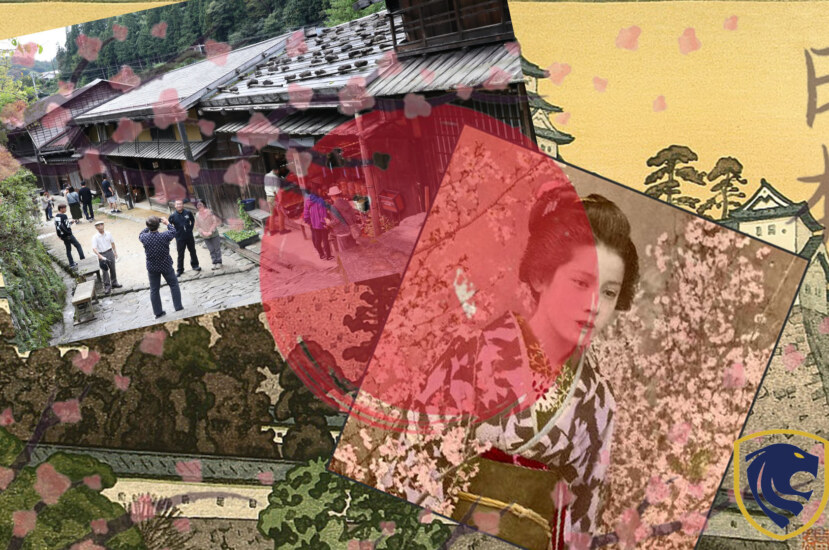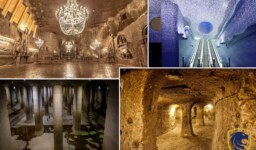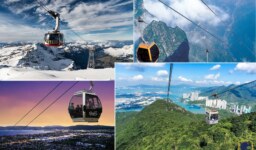The 1600s was a period that Christian missionaries traveled in Asian, and African countries intending to propagate their religion and culture. In the early 1600s, there were reportedly 500,000 Catholics in Japan. As a measure to prevent foreign influence, Tokugawa Leyasu introduced ‘sakoku’. In Japanese ‘Sakoku” means ‘closed country’. So, Japan kept its borders closed to foreigners from 1639 to 1853. This period is referred to as the Edo period. Japanese culture and industry blossomed during this period but at the expense of the freedom of people.
Imposition of Strict Laws
Several strict laws were introduced to avert foreign influence in Japan.
Accordingly, Japanese ships were strictly prohibited from leaving Japanese shores. Also, the Japanese citizens were forbidden to visit foreign countries. In case a person tried to do the aforementioned in secrecy, he would be executed. The ship would be seized and taken legal custody of and the owner would be apprehended. If there was any returnee from a foreign country he would be killed. All the returning ships would be checked to find out if there were followers of Catholicism.
Citizens were advised to ascertain whether there were places where Catholicism was taught, and take steps to carry out a proper investigation. Those who informed the whereabouts of the priests were remunerated. Also, if the priest happened to be a high-ranking priest he would be given a hundred pieces of silver.

What Happened in Japanese Isolation
Trade activities were carried out with a stringent set of laws. In ancient Japan, the trade cities were Kyoto, Osaka, Sakai, and Nagasaki. Dutch and Chinese traders were allowed to engage in trade in Nagasaki. So, Nagasaki was the only city the Japanese could contact with foreigners. Members of the military aristocracy were barred from purchasing goods directly from Chinese merchants from Nagasaki. When foreign ships arrived on Japanese shores, one single city wasn’t allowed to buy all the goods from the ship. All the raw silk that foreign ships brought would be allotted among five trading cities after the settlement of prices.
Robust economy
Under the ‘sakoku’ system, stern restrictions were introduced, so people had to count on local products and materials which resulted in creating a prosperous economy. They practiced methods of reusing and recycling. They were self-sustained with all the resources needed including food and energy. 30 million of the populaces could feed themselves, of course without fossil fuels or chemical fertilizers.

Robust economy
Sakoku was generally a peaceful period marked by stability. As there was no anarchy, there was no necessity to spend money on conflicts. During this period of peace, people focused more on trade and other activities. The farmers produced commercial crops such as cotton, silk, and handicraft goods and rural industries developed oil production, silkworm farming, paper-making, and sake and miso paste production. As a result, transportation and communication developed to increase trade opportunities and enlarge the market.
Thriving and unique culture, customs, and ways of life
As Japan did not influence the outside world, a culture unique to them was developed.
Art
Their unique culture is reflected in the art that has lasted to date, such as Haiku which is a type of short-form poetry, and kabuki which is a classical form of Japanese dance-drama.

Art
During that period, the artists wore beautiful and captivating costumes and they were adorned with lavish makeup which was called kumodori makeup.
Slow Life
Slow life was a way of life that prevailed in Japanese society where minimalism and frugality were practiced. For instance, clothes were fixed and mended and used as much longer as possible until they became tattered rags. Human ashes and excrement were converted into fertilizers.
Japanese Culinary

Japanese Culinary
In addition, Japan has culinary arts that began in this period. Their cuisine is disparate from the rest of the world. There was a street vendor called Yohei. He came up with the idea of consuming raw fish with a small portion of vinegar rice, which was a modernized version of a sushi dish. In contemporary Japan, this dish which was introduced in the Edo period is considered the most popular dish and is consumed all over the world.
Measurement of Time
Time units such as seconds, minutes, and hours were not present in that era. Japanese had a system in which a day was divided into six parts. The length of the hour in different seasons was different according to the season it was measured. Because daytime between sunrise and sunset differs in summer and winter. People used to get an idea of time by the sound of bells installed in castles and temples.

Proximity to Nature
People’s lives were closely related to nature. Forest bathing has been practiced in Japan from the time of antiquity. Moreover, forest bathing refers to the concept where people spend time in a natural environment being immersed in nature and being mindful of nature. It was a way to do away with stress. They also practiced ‘zazen’ or ‘sitting meditation’ which paved the way to experience the rhythm of nature.
Festivities
It’s a century-old practice to enjoy the beauty of nature during Cherry blossoming times. It creates a heavenly atmosphere with the blossoming of Sakura flowers in different colors. Furthermore, people arranged seasonal festivals during this period, wishing for fertility during cherry blossom season and exulting the harvests of the autumn. A rich and diverse range of local foods were prepared for these festivities.

Festivities
Gardening and Landscaping
Japan had unique gardening and landscaping methods from ancient times. Kaiyu style garden was introduced during the Edo period for feudal lords. The arrangement of a pleasure garden is usually a pond in the center and small gardens around it. Often some paths would lead to different miniature landscapes. Also, they incorporated a teahouse most of the time. The Korakuen Garden, which was created in 1626, is one of the most spectacular ” kaiyu”-style gardens in Tokyo.

Gardening and Landscaping
It should be noted that other unique cultural items such as tea ceremony and sumo wrestling began in this particular period. The Japanese tea ceremony is a cultural exercise where powdered green tea is prepared and presented ceremonially. Sumo is a Japanese-style wrestling game and currently, it is the national sport in Japan.
Social Hierarchy in the Period of Isolation
A rigorous hierarchical system was maintained in this period.
According to the hierarchical system that prevailed at the time, the shogun was the most powerful person. He was a political and military leader. The emperor was the religious leader and the role of the emperor was only ceremonial. Secondly, feudal lords(daimyo) who attended the clan lands held the next position in the hierarchy. They were required to spend half of their day supervising their land and the other half attending the shogun.

Social Hierarchy in the Period of Isolation
The third in the hierarchy was the warrior class. They were unconditionally loyal to the shogun. They were generally educated and were patrons of art. A long sword was always seen to be with them. They admired an honorable death and in the face of insult, they would commit suicide rather than live with the insult. They lived in castle towns and they constituted 5% of the population.
Peasant farmers were the next in the hierarchy. They were an exploited lot having to give away rice they cultivated as tax. Also, they had to survive with barley and millet. They cultivated cotton, tea, tobacco, and sweet potatoes as well. And there was no upward social mobility for them. And they constantly underwent famine and poverty.
Artisans
Next in the hierarchy, artisans were not a group respected in that period. Many of them engaged in swords making and pottery making.
Merchants were lower than artisans. They provided wood, tatami mats, produce, household items, textiles, and trinkets which helped the advancement of ‘Edo society. They never improved in status but in wealth. Their homes were said to be simple. But they beautified their homes with opulent decorations and indoor gardens. This community developed customs, culture, values, and a hierarchical system of their own.

The Geisha, the actors, and the prostitutes were excluded from the hierarchy, as they were the entertainers for the nobility and samurai.
The butchers, tanners, gravediggers, and those who dealt with the diseased and the deformed were considered outcasts or the ‘eta’.
The sakoku period came to an end in 1853 when Matthew Perry of the United States Navy forced Japan to put an end to isolation and commence trade with US merchant ships. According to historical records Christianity was eliminated and the last follower of Christianity was either killed or reconverted by the 1660s.




